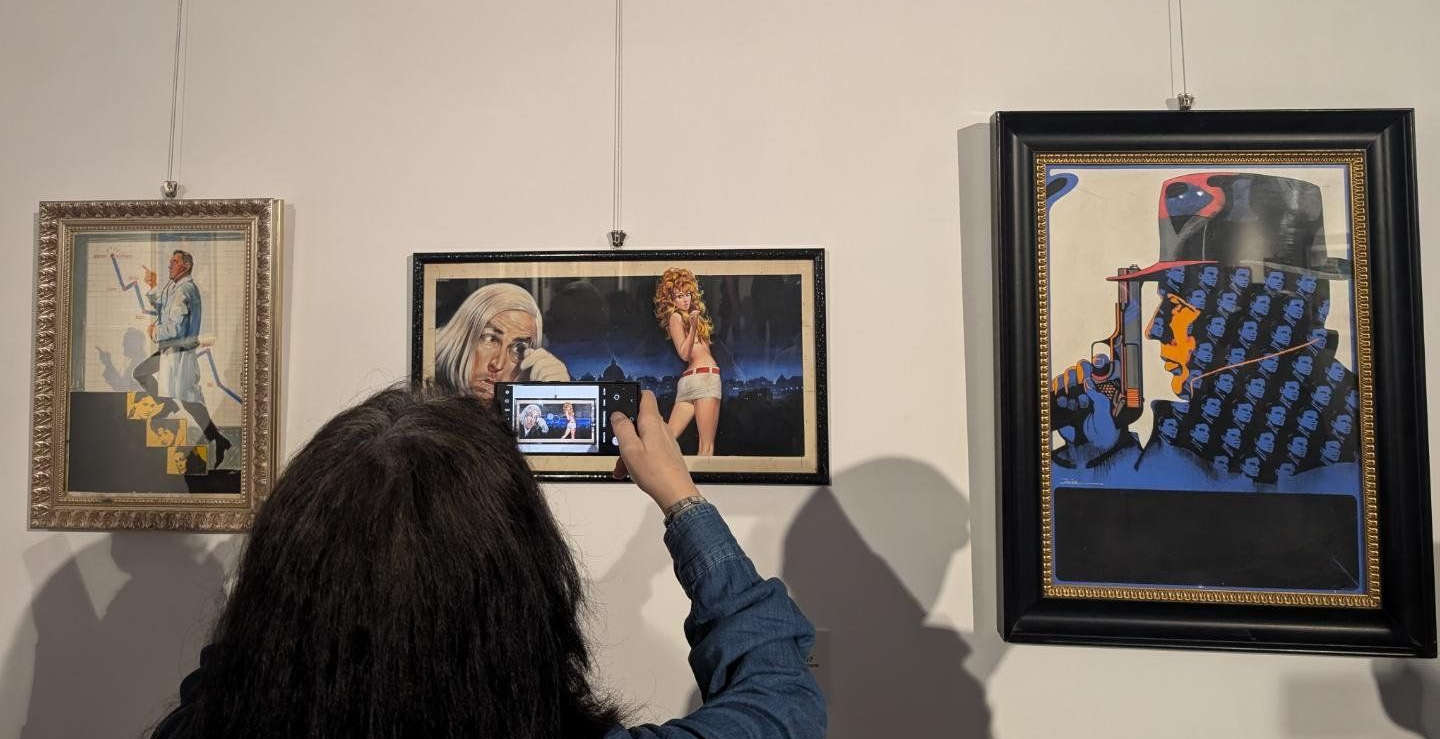Palazzo Merulana, home of the Elena and Claudio Cerasi Foundation, managed and enhanced by Coopculture, is hosting until Dec. 8 the exhibition Rome in Brush Cinema. Pictorial sketches of movie posters, from Roma città aperta to La voce della luna, conceived and curated by Stefano Di Tommaso and Paolo Marinozzi. The exhibition, part of the schedule of the Rome Film Festival, with the contribution of SIAE, under the patronage of ANICA, and in partnership with Banco Marchigiano and WebPhoto&Service, tells the story of Rome with its cinematic visions and includes 50 original pictorial sketches, the work of great artists, made for the typographic printing of film posters. They were made by the best-known and most important artists in the field, true “dream designers” such as Ballester, Capitani, Martinati, Brini, Nano, Manfredo, De Seta, Manno, Olivetti, Cesselon, Geleng, Ciriello, Symeoni, Nistri, Iaia, Putzu, Casaro, Avelli, Biffignandi, Gasparri, who together represented a true artistic current of the ’1900s and worked for the biggest American majors such as Warner, MGM, Paramount, Columbia and for the Italian Titanus, Lux, Ponti-De Laurentis, Amato, Rizzoli, Cecchi Gori.
The works come from the “Cinema a pennello” museum, founded by Paolo Marinozzi, based in Montecosaro (MC) in the family palace. Inaugurated in 2011 by Claudia Cardinale, it has been visited among others by industry professionals, including Catherine Spaak, Giancarlo Giannini, Carlo Verdone and many others, who have also donated memorabilia from some of their films. The art of film poster art, in the evolution of cinema as language and imagery, has always played an undeniably important role in the promotion and dissemination of film culture.
From this point of view, film poster art constituted, at least until the 1970s, a kind of aesthetic extension of film style, thematization, and merchandising. Moreover, it is characterized by a language endowed with an aesthetic with its own specific autonomy from the very iconography and staging of films.
The exhibition aims to articulate, therefore, a kind of narrative for films and actors from the postwar period to the present, of Rome as a film set. From the unsettling appearance of neorealism with Roma città aperta, Ladri di biciclette, Umberto D to the myth of cinema through the Magnani of Bellissima, to that of Gadda and Germi’s Un maledetto imbroglio (based on Quer Pasticciaccio brutto de Via Merulana), from the Rome of Poveri ma belli and I soliti ignoti, to Accattone and Mamma Roma.
The exhibition also wants to celebrate the anniversaries that fall this year of four greats of Italian and international cinema: the 50th anniversaries of the death of Vittorio De Sica and Pietro Germi, the 100th anniversary of the birth of Marcello Mastroianni, and the milestone birthday of Italy’s greatest diva, Sophia Loren. The anniversaries are evoked in the exhibition poster that immortalizes the face of the commissioner in Un maledetto imbroglio and the iconic striptease scene in Ieri, oggi e domani, which, directed by Vittorio De Sica, won theOscar for best foreign film.
The exhibition then includes tributes to two great icons of cinema: Federico Fellini, who shot his films in the legendary Studio 5 in Cinecittà, and Alberto Sordi, a symbol of the Capital of which he was Mayor for a day.
For all information, you can visit the official website of Palazzo Merulana.
 |
| An exhibition at Palazzo Merulana displays pictorial posters of 20th century Italian cinema |
Warning: the translation into English of the original Italian article was created using automatic tools. We undertake to review all articles, but we do not guarantee the total absence of inaccuracies in the translation due to the program. You can find the original by clicking on the ITA button. If you find any mistake,please contact us.